The Trialex System organizes
information within a clinical data warehouse into objects. The system stores and
manages the attributes of each object. This structure enables a a centralized
approach towards managing information to accomplish greater standards, consistency and
efficiencies. The attributes of these objects can be accessed in the study conduct
area. The three objects discussed in this section include:

The reports object stores
attributes of the listings, summary tables and figures. This is used for the purpose
of controlling the appearance of the reports and the generation of the table of contents.
It manages attributes such as titles, footnotes and other related attributes to a
report. A sample view of the attributes are shown here.
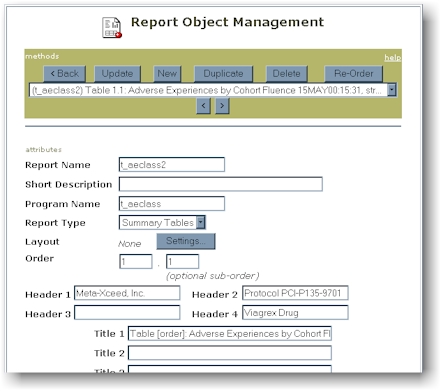
More detailed information for the reports object is available in the reference
section.
The programs object stores
attributes pertaining to SAS programs for a specified study. This is used for
updating and submitting SAS programs. The programs object manages attributes such as
the name of the program, the location and the header of the program. An example of
some of these attributes are shown here:
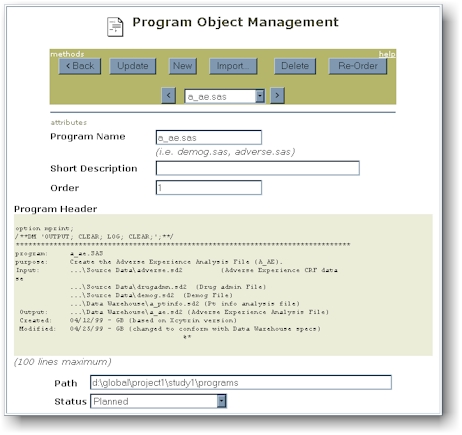
For more detailed information on the programs object, please refer to the reference
section.
The data
object manages the attributes pertaining to SAS datasets within the data
warehouse. This is used for tracking the dependencies between the data and
programs. Some of the attributes managed includes the location of the data and the
last date modified. An example of the data object management screen is shown here.
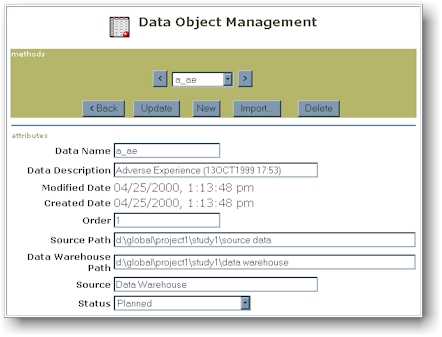
Once the objects are defined and
managed, there are many tasks which use the information gathered by the objects to
accomplish various functions. These tasks can help manage a clinical data warehouse
in an effective way.
Managing the dependencies among
the objects is accomplished with the aid of a visual diagram as shown here.
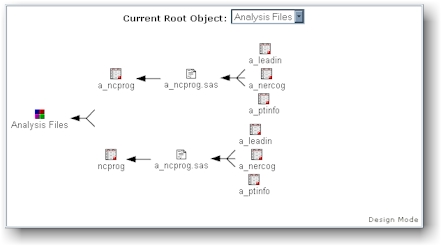
Once the dependencies are managed,
the refreshing of the data warehouse can be accomplished in the right order.
This task involves identifying which dependency object needs to be refreshed. There
is also an option of scheduling the refresh task.
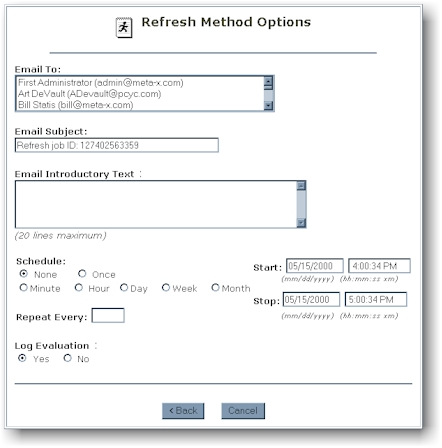
When the data and the reports are
refreshed and updated, a common task is to send reports to team members via email.
An efficient way of accomplishing this is through the first page utility. This
captures the first page of each report before sending it to selected team members.
Another way of delivering the reports to team members is through a table of contents
(TOC). There are many options for the TOC including HTML and RTF formats.
Some of the parameters for the TOC are shown here.
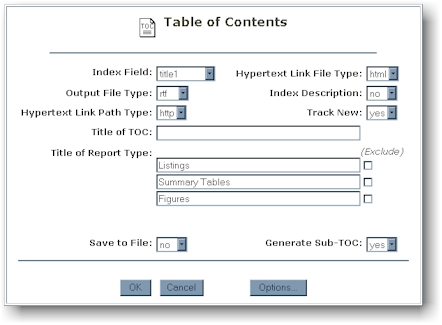
A sample table of contents in RTF
viewed through MS Word may look like the following:
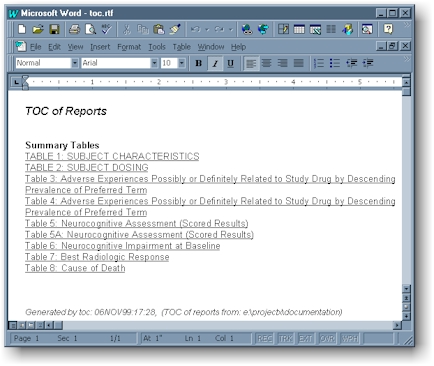
Team members can collaborate
during the review and development of the clinical data warehouse through status tracking.
The status view allows users to see the most updated status of each report and
facilitates the communication of comments among team members pertaining to each object.
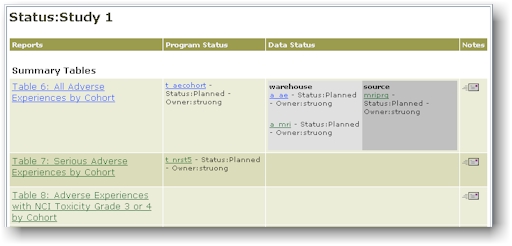
When all the objects within the
clinical data warehouse are completed, a necessary task is to produce documentation for
the electronic submission. This documentation task is automated by using the tools
within the Trialex System.
|